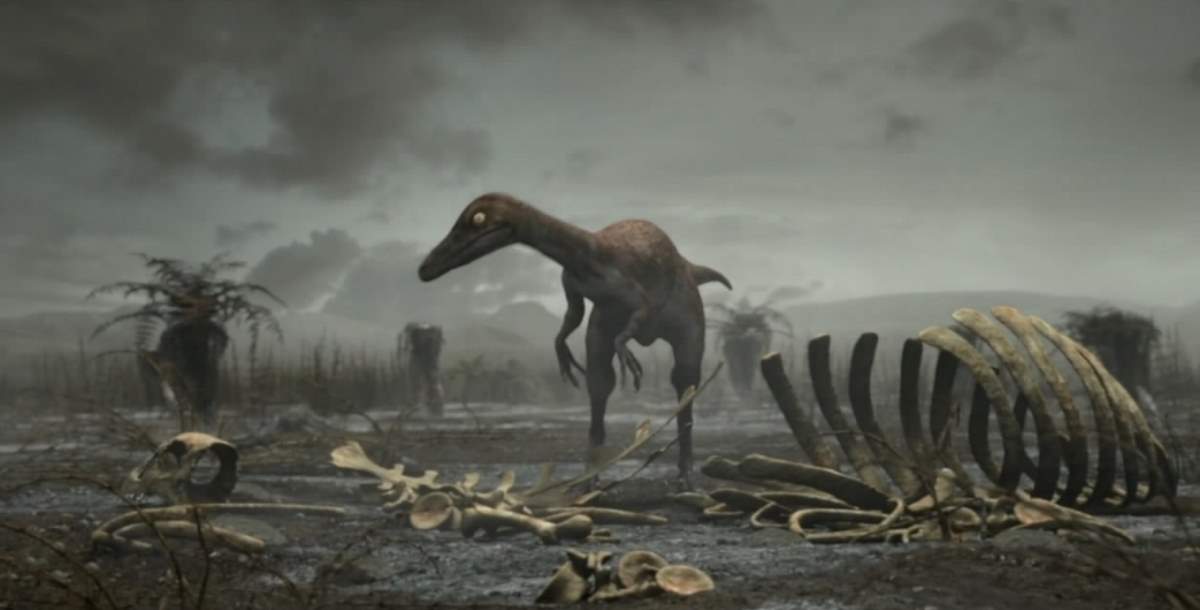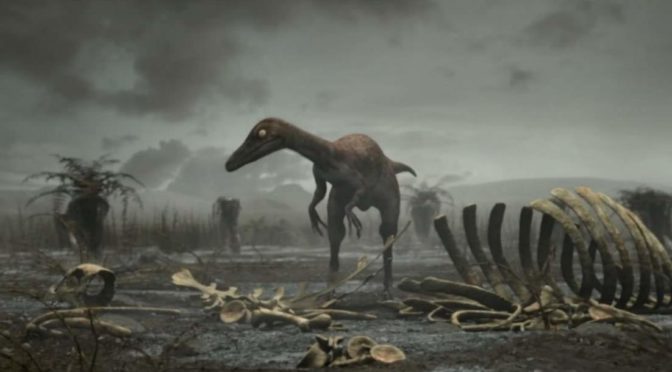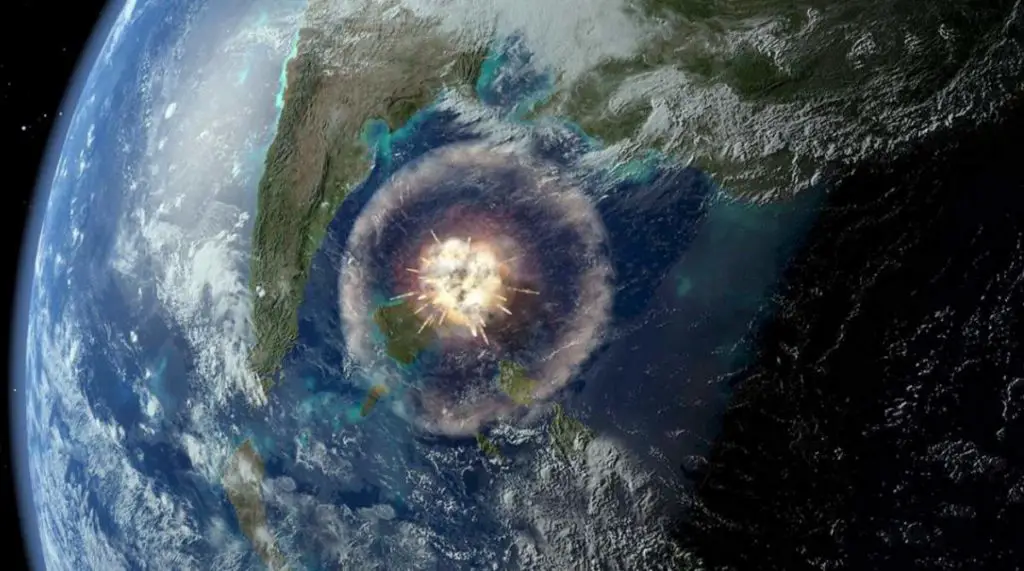The catastrophic event that ended the reign of the dinosaurs 66 million years ago has been a subject of fascination and research for decades. A groundbreaking study by the Potsdam Institute for Climate Impact Research, detailed in their 2017 article “Baby, it’s cold outside: Climate model simulations of the effects of the asteroid impact at the end of the Cretaceous,” offers a compelling computer simulation of the aftermath of the Chicxulub asteroid impact.
This simulation reveals how prolonged darkness and severe cold, triggered by sulfuric acid droplets blocking sunlight, led to a dramatic global temperature drop and significant ecological shifts, ultimately contributing to the mass extinction of the non-avian dinosaurs and other species. This research not only illustrates the direct consequences of the asteroid impact but also provides insights into the complex climatic and environmental changes that followed, marking a pivotal moment in Earth’s history.
Baby, It’s Cold Outside: How the Darkness and Cold Killed the Dinosaurs
Scientists created a computer simulation of how the afterward effects of the famous Chicxulub asteroid (estimated to be 10 km/6.2 miles wide) killed the non-avian dinosaurs (and also a wide range of other species). According to a new study, after the devastating impact, the darkness and cold killed the dinosaurs 66 million years ago.
On January 13, 2017, an article titled “Baby, it’s cold outside: Climate model simulations of the effects of the asteroid impact at the end of the Cretaceous”, published by the Climate Scientists of Potsdam Institute for Climate Impact Research (PIK), revealed a detailed model of what happened to the atmosphere and the climate after the Chicxulub impact.
According to the computer simulation, after the impact, tiny droplets of sulfuric acid formed high up in the air and blocked the sunlight for many years. The Earth became really, really cold: for at least three years, even in the tropics the temperatures were barely above freezing, and the average global temperature was below 0°C (32°F). Before the impact, the average global temperature was around 26°C (47°F), so this means a huge drop. And the recovery time was more than 30 years! The dinosaurs were used to living in a lush climate and were already in decline, so they couldn’t survive after the last deadly blow.
The drop in the Earth’s global temperature caused the expansion of the ice caps, and all this ice continued cooling the Earth by reflecting sunlight back to space, even years after the sulfates cleared from the atmosphere.
Then an additional kill mechanism took place: surface water of the oceans cooled and sank, causing the nutrient-rich bottom water to rise. As sunlight returned, probably massive blooms of algae occurred. These algae produced toxic substances, further affecting life at the coasts.

The abstract of the article:
“Sixty-six million years ago, the end-Cretaceous mass extinction ended the reign of the dinosaurs. Flood basalt eruptions and an asteroid impact are widely discussed causes, yet their contributions remain debated. Modeling the environmental changes after the Chicxulub impact can shed light on this question. Existing studies, however, focused on the effect of dust or used one-dimensional, noncoupled atmosphere models.”
“Here we explore the longer-lasting cooling due to sulfate aerosols using a coupled climate model. Depending on aerosol stratospheric residence time, global annual mean surface air temperature decreased by at least 26°C, with 3 to 16 years of subfreezing temperatures and a recovery time larger than 30 years. The surface cooling triggered vigorous ocean mixing which could have resulted in a plankton bloom due to the upwelling of nutrients. These dramatic environmental changes suggest a pivotal role of the impact in the end-Cretaceous extinction.”
You can read the full article on onlinelibrary.wiley.com

- Space Shuttle Endeavour’s Touchdown Meets Columbia’s Salute [An amazing photo from the past] - February 29, 2024
- Moon Landings: All-Time List [1966-2024] - February 23, 2024
- From Orbit to Ordinary: 10 Earthly Applications of Space Technology - January 23, 2024

